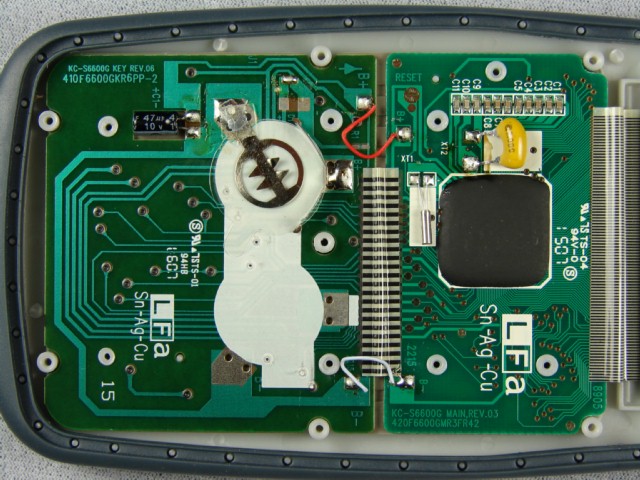
The Sentry CA756.
Note that the packaging says "Compares to TI-83." I don't think so!
Text and Images Copyright (C) 2006, 2007 Mike Sebastian
In August 2007, Eugene Clement sent me an email to tell me about finding another sub-20 dollar graphing calculator at a Big Lots! store near his home. This calculator was the Sentry CA756. He provided exterior and interior pictures of his CA756 and results from computing the forensics algorithm on his CA756. Fortunately, there was a Big Lots! store near my home, and fortunately they also had the Sentry CA756 in stock. So, I purchased my own CA756 to examine.
The first calculation I ran on this calculator was the forensics algorithm. The forensics algorithm result (9.0000296195 after working around the arcsin bug) revealed that this calculator was the same as the Citizen SRP-320G. It even had the same arcsin bug as the SRP-320G.
However, the Sentry CA756 had one distinct difference from the prior sub-twenty dollar graphing calculators I'd examined. It had a slightly smaller graphing region in the display of 33 by 23 pixels, instead of 35 by 23 pixels. Closer examination of the graphing region of the display revealed that it was not simply cropped, but the entire region was shifted left by three pixels relative to character display cells. Among other things, this strongly suggests slightly different chip (at a minimum, slightly different software) from the Citizen SRP-320G and its progeny.
Like the Durabrand 828, the Sentry CA756 is just barely a graphing calculator, with a postage stamp sized 33 by 23 pixel graphing region on the left half of the display.
Forensics result for the CA756. The forensics algorithm produces a result of 9.0000296195 - a 12-BCD-digit result.
So, what do you get in a $16 graphing calculator? You get:
The Sentry CA756 owner's manual was a pleasant surprise. The 136 page manual appears to be printed in an 8-point font, which may seem a little small until compared to the 4-point font in the manuals that came with the Durabrand and Corner Office calculators.
The two PCBs are marked with the string "KC-S6600G". This looked suspiciously like the model number for a calculator manufactured by Karce. A quick look at the Karce web site turned up the KC-S6600G graphing calculator with specifications identical to the CA756 and an appearance that only differed in color.
Of the sub-twenty dollar calculators I've evaluated so far, even with its bugs, this one is my favorite. While I'm annoyed with all the silver-painted consumer electronics coming out of China, in this case, the silver provides a nice light background to maximize contrast for the keyboard legends. The keyboard legends are printed in colors intended to provide good contrast (orange, purple, and green). The keys themselves are grey and dark grey with white legends printed on them (the second functions on the rocker key are orange). The legends are also printed in a decent sized font.
 |
The Sentry CA756. Note that the packaging says "Compares to TI-83." I don't think so! |
 |
The Sentry CA756 out of its packaging. |
 |
The internal view of the CA756. Construction is fairly typical, with the chip protected by a blob of epoxy (chip-on-board), and the use of heat seal conductors to connect PCBs and displays. However, one unusual construction feature is two PCBs. The PCB holding the chip is fiberglass-epoxy, while the PCB holding the lithium coin cell is phenolic. The two PCBs are connected together with a heat seal ribbon conductor for logic signals, and two wires for the power from the lithium cell. |
Last updated September 3, 2007